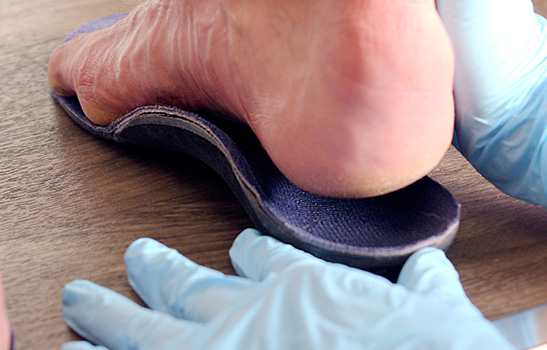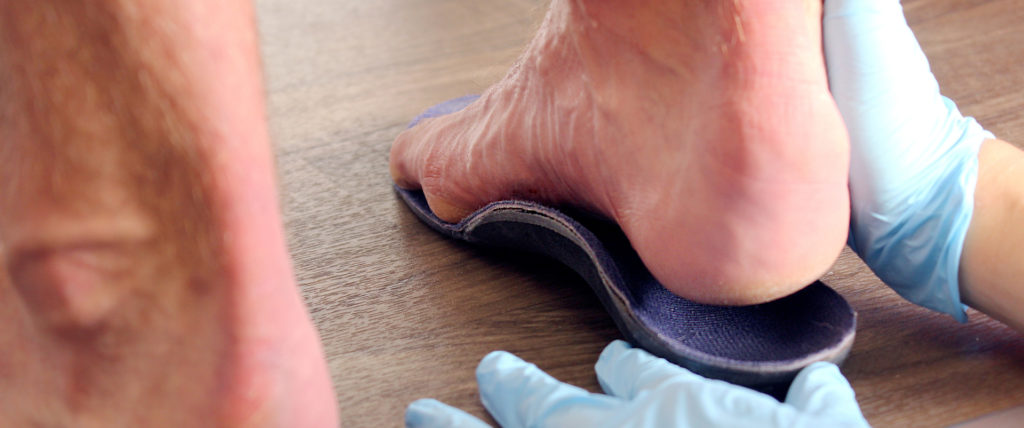Plantar orthotics
By definition, orthotics are orthopedic devices designed to increase the physiological performance of an organ.
Plantar orthotics, what is it?
Plantar orthotics are powerful and versatile therapeutic tools. They are soles that are inserted into shoes and are used to relieve or prevent pain and pathologies caused by the misalignment of the feet.
Their ultimate goal is to improve the function of the lower limbs and to support or compensate for a deficiency.
Plantar orthotics, who is it for?
Treatment or prevention of pain :
- Heel Spur
- Plantar Fasciitis
- Bunions (hallux valgus)
- Hammer toes
- Morton’s neuroma
- Metatarsalgia
- Tendinitis
- Bursitis
- Chronic ankle sprains
- Knee pain
- Lower back pain
Postural problems :
- Flat Feet / Hyperpronation
- Arched feet / hypersupination
- Leg length discrepancy (lower limbs)
Foot orthotics for athletes :
- Prevent or treat injuries to the lower limbs
- Optimize the performance of the athlete.
Plantar orthotics for children :
- Correcting a faulty approach
- Support a deformity and guide the growth of the foot and lower limbs that are still developing
- Preventing foot deformities or reducing the impact of pathology.
A child can wear orthotics at 3 years of age.
What are the earnings of plantar orthotics?
- Improved stability and balance
- Uniform distribution of plantar pressures and an increase of the contact surface with the ground
- Correction of faulty foot movements and the rest of the body
- Preparation of the foot for optimal propulsion
- Improved posture
- Reduction of the energy expenditure that the body must provide in order to move
- Improved sports performance
- Optimized force transmission to the rest of the lower limbs (ankle, leg, knee, hip, lower back)
- Development of better motor patterns
-
Step 1 - History and complete biomechanical examination
Evaluation of radiographs, foot function, posture, gait and plantar pressures synchronized with cameras.
-
Step 2 - A three-dimensional molding in an optimal position
This step is crucial to correct deviations accurately and have the desired impact.
-
Step 3 - The prescription of orthotics based on results
A variety of materials and types of foot orthotics exist to meet the specific needs of each patient.
-
Step 4 - Monitoring and optimization with unique technology
Pressure sensors are integrated into the footwear, which makes it possible to measure the effect the orthotics have on the behavior of the foot.
Orthotics act like crutches and make your feet lazy!

On the contrary, an untreated foot alignment problem may worsen over time. The foot orthotics work with the feet by guiding them to make the right movements at the right moments while optimizing their functioning. We can therefore compare the effect that orthotics have on the mechanics of the foot with the effect that glasses have on our sight.
Moreover, several problems arise from defects in the formation of the foot. For example, someone who has a longer bone than the others will end up with excessive pressure at this location, no matter what exercise he or she chooses.
I have to change all my shoes to wear orthotics!

Although some shoes are more suitable for foot orthotics than others, it is not necessary to systematically purchase larger shoes. Many shoes in your closet may be suitable for wearing orthotics. It is possible to make small and versatile orthotics as well as more voluminous orthotics with more cushioning. It all depends on the purpose and habits of the patient.


